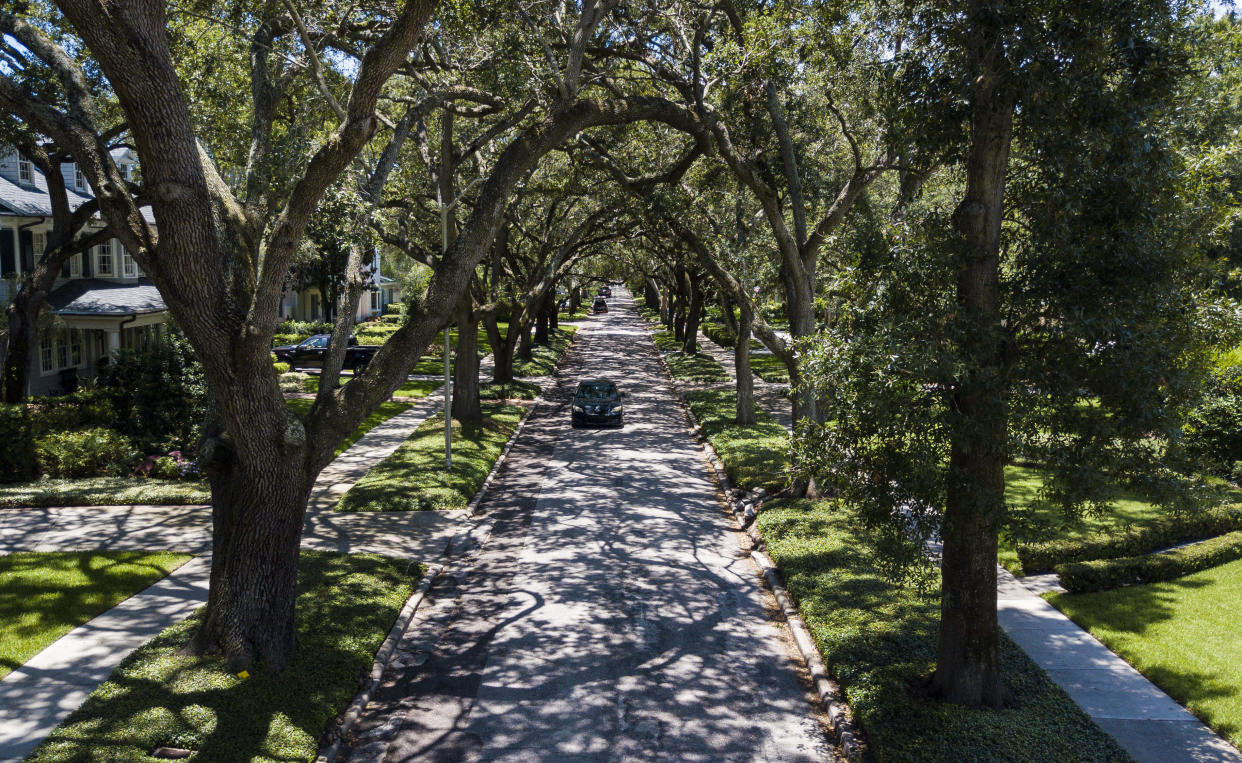Tampa gets $1M federal grant to plant trees to reduce extreme heat

- Oops!Something went wrong.Please try again later.
- Oops!Something went wrong.Please try again later.
Local officials have secured money to help remedy Tampa’s shrinking tree canopy.
U.S. Rep. Kathy Castor, D-Tampa, announced Thursday the city had been awarded a $1 million federal grant through the U.S. Department of Agriculture’s Urban and Community Forestry initiative.
“We’ve seen a lot of beautiful live oaks and large trees come down,” Castor said in an interview with the Times. “So that’s why the timing of this grant is so important.”
A 2021 study found Tampa’s tree canopy coverage to be at its lowest in 26 years. The city’s average annual temperature has increased by 2.5 degrees since 1891, when record-keeping began, according to the city’s Climate Action and Equity Plan.
Tampa’s trees remove 1,000 tons of air pollutants every year, according to the city report. Castor said the federal grant is focused on reducing toxic air and carbon pollution across the country.
The federal funds will help move forward Tampa Mayor Jane Castor’s goal to plant 30,000 trees citywide by 2030. The two Castors are not related.
“This is a huge win for Tampa residents and our cherished tree canopy,” Jane Castor wrote in a news release. “Great cities have great tree canopies.”
Kathy Castor cited a 2019 Florida law that limits local governments’ power to set rules about tree removals as a major factor in waning canopies across the state. Though the law was tweaked last year, Kathy Castor said the city still is working to bolster Tampa’s canopy with “one hand tied behind their back.”
The federal grant requires that trees be planted in low-income areas where there are already sparse canopies, Kathy Castor said.
Tampa’s canopy report found that lower-income and Hispanic neighborhoods have less shade, making them among the areas most affected by heat.
Whit Remer, Tampa’s sustainability and resilience officer, said the city will direct these new funds toward underserved communities, including East Tampa and some West Tampa neighborhoods such as Drew Park and Ybor City.
Finding space for new trees in densely populated Tampa is one of the biggest difficulties the city faces, Remer said. Infrastructure, utilities and sidewalks limit the right-of-way space available for new trees.
“Planting in the public realm — outside of parks — can be challenging,” he said. “So that’s why we’re trying to get creative.”
That means planting trees in stormwater ponds, where they can help reduce runoff. But adding shady trees in areas with heavy pedestrian traffic is still a priority, Remer said.
Each tree planted through the city’s Tree-mendous Tampa program costs the city $600 because the trees are planted on private property and the owner is responsible for maintaining them, Remer said.
He said he expects efforts funded by the federal grant money could run up to $1,000 per tree for those planted in public places because the city would be tasked with maintaining them. There is no estimate of how many trees would be planted on public versus private property yet, Remer said, so the funds could finance the planting of between 1,000 and 1,600 trees.
“The money goes quick,” he said.
Remer said the city plants 15-gallon saplings, and he explained the added expenses to the city for trees put in public spaces are due to the cost of nurturing them in the first year of planting. He said trees this size fall into the city’s “sweet spot.”
“Those are big enough that we think that they will have a high success rate, and they’re small enough that we can plant those at scale,” Remer said.
Remer said he doesn’t know when the grant money will be at the city’s disposal, but he expects tree plantings to start within three to six months after those funds are available.

